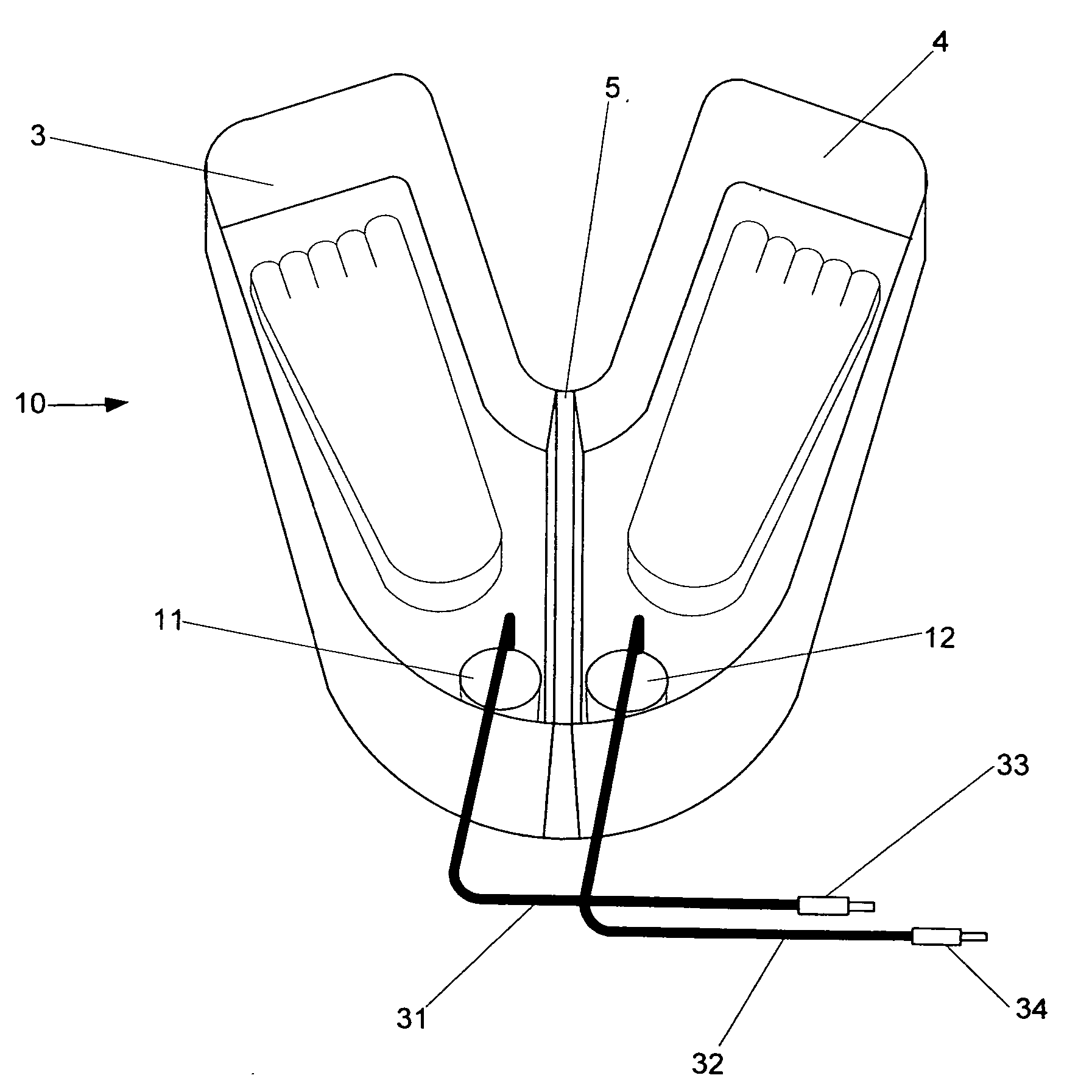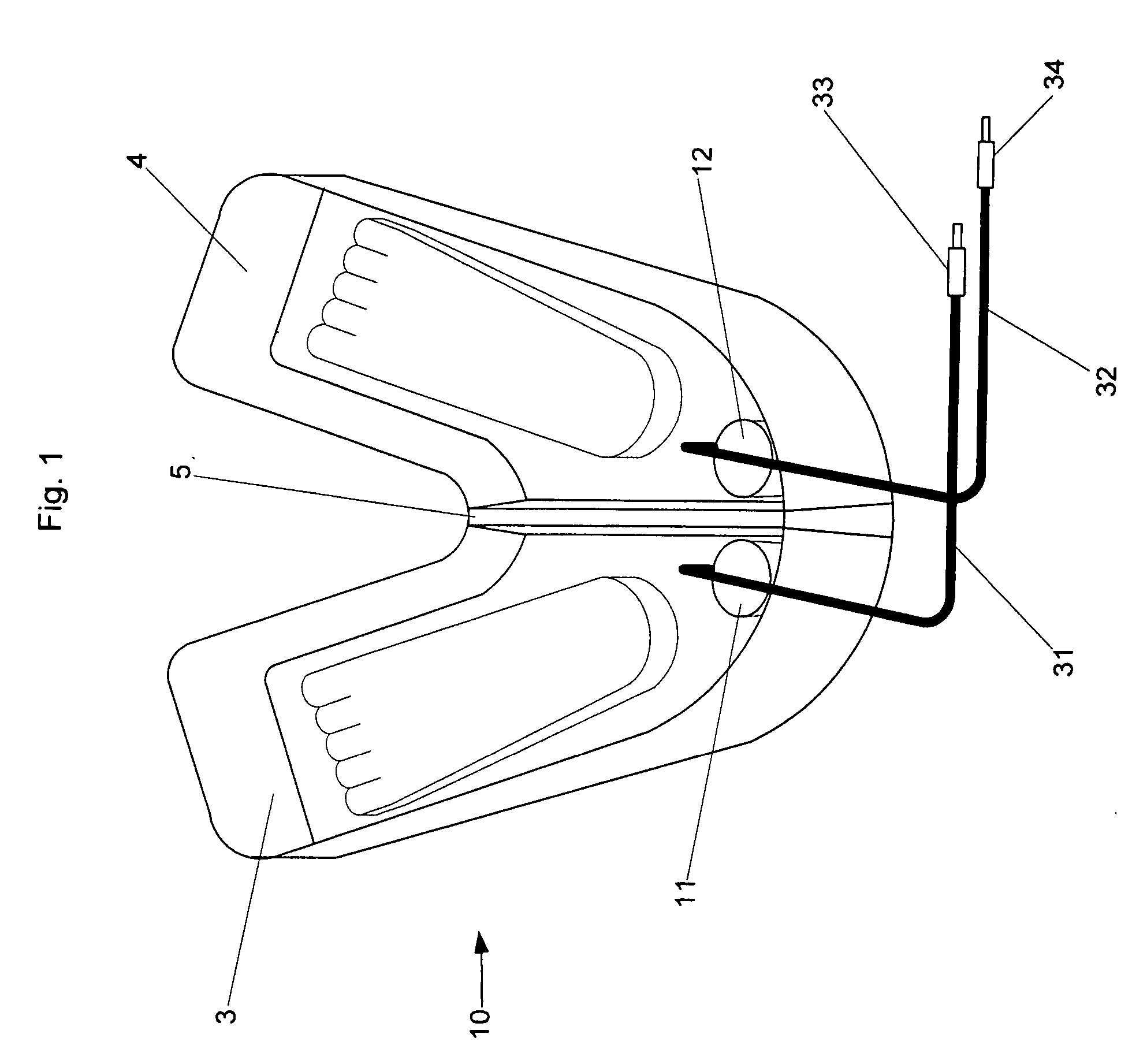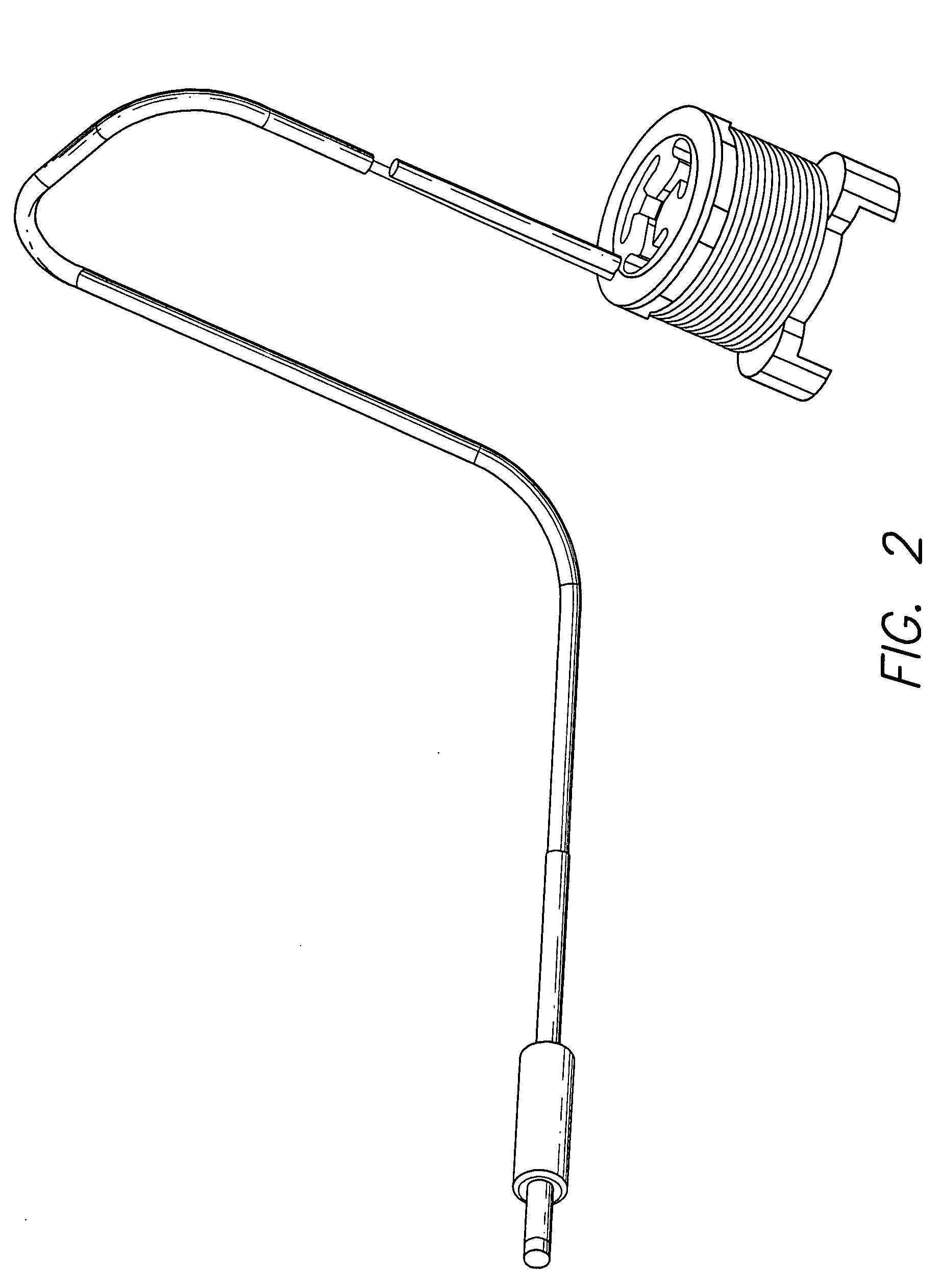Iontophoresis device
- Summary
- Abstract
- Description
- Claims
- Application Information
AI Technical Summary
Benefits of technology
Problems solved by technology
Method used
Image
Examples
Embodiment Construction
[0018] Referring to FIGS. 1-7, there is illustrated the preferred embodiment of the present invention, designated generally as device 10, which is used to perform iontophoresis. FIG. 1 illustrates device 10. Device 10 has a first reservoir 3 and a second reservoir 4 such that the liquid in reservoir 3 does not contact the liquid in reservoir 4. The reservoirs may be separate vessels or a single vessel separated by a partition 5. Also located in reservoir 3 and reservoir 4 are first and second arrays 11 and 12, respectively.
[0019]FIGS. 2, 3 and 4 illustrate first and second arrays 11 and 12, which are used to generate a current and drive ions contained in reservoirs 3 and 4 through the skin. Arrays 11 and 12 each have a cap 21 and a base 22 that form a housing to hold a first electrode 23 at a fixed distance from a second electrode. Cap 21 and base 22 have apertures in them through which the liquid can flow. The solution should be able to freely flow between the electrodes. Free hor...
PUM
 Login to View More
Login to View More Abstract
Description
Claims
Application Information
 Login to View More
Login to View More - R&D
- Intellectual Property
- Life Sciences
- Materials
- Tech Scout
- Unparalleled Data Quality
- Higher Quality Content
- 60% Fewer Hallucinations
Browse by: Latest US Patents, China's latest patents, Technical Efficacy Thesaurus, Application Domain, Technology Topic, Popular Technical Reports.
© 2025 PatSnap. All rights reserved.Legal|Privacy policy|Modern Slavery Act Transparency Statement|Sitemap|About US| Contact US: help@patsnap.com



